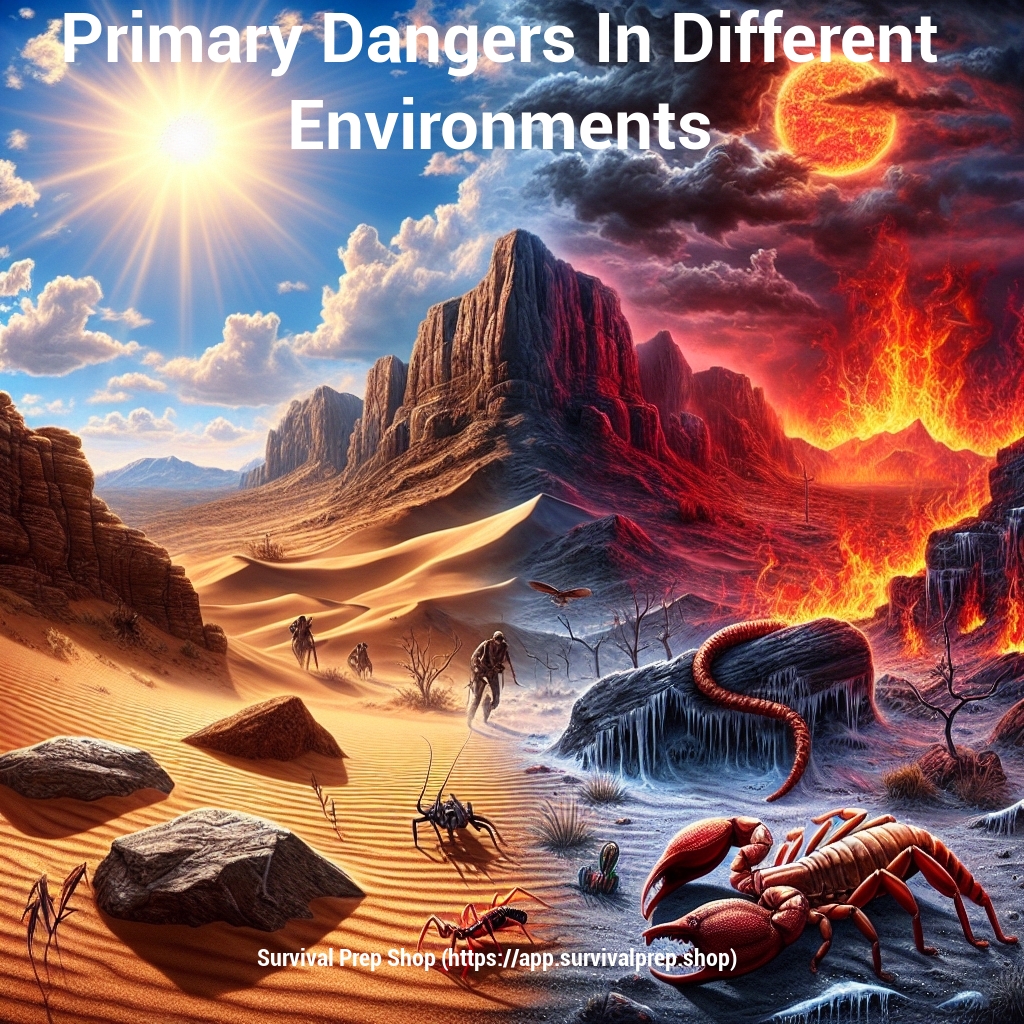
Hello everyone, and welcome to the Survival Prep Shop.
I’m TK, and I’m excited to share my perspectives on today’s vital survival strategies.
Just a reminder, these ideas represent my personal experiences on this path of readiness.
Your survival in various locations could depend on your awareness as well as your knowledge and skills. By knowing what the dangers are, you can survive even harsh environments.
Desert: If you’re trying to survive in a desert environment, there are several things to watch out for. The first is the extreme temperature. When you’re in a desert, you don’t just have to deal with the heat caused by the sun high in the sky.
In the desert, it’s not just direct sunlight that can be a problem – though it can be intense. You also have to deal with other things that the sunlight affects. In the desert, the sun pours its rays down onto whatever is on the ground.
These objects, such as the sand or rocks, are then heated up by the sun’s rays so in turn, they also project heat. Because of that, in the desert, you have heat above you as well as below you on the sand and around you on the rocks.
Heat isn’t the only extreme temperature. Many desert regions experience cold temperatures at night. This happens in those areas because when the sun goes down, no heat is being generated and what the sun heated up during the day loses its temperature at night.
Both the sand and rocks cool off because they can’t retain the heat. Besides the temperatures, you also have to beware of arachnids in the desert. For this reason, you should always wear shoes when walking and check your shoes carefully before putting your feet into them.
Ants are a problem in the desert and many are known to cause bites that are a lot more painful and have a higher risk of allergic reaction that the ants you may be accustomed to dealing with before your survival experience.
There is more than one type of scorpion in the desert ranges and none of them should be messed with. If you see one, it’s best to avoid it. Scorpions can cause you to feel a range of different symptoms if you’re stung by one.
Some reactions are mild – such as feeling the same effect as if you were stung by a bee, but other reactions are severe – including throwing your heart out of rhythm, severe sweating, nausea, muscle problems, and difficulty with your breathing.
Watch out for snakes in desert areas, too. Snakes such as rattlesnakes, sidewinders, vipers, and coral snakes are all in the desert. These are venomous snakes and while some of them are non-aggressive, if you stumble on one or accidentally reach or step near it, they will strike.
Spiders are something else that you want to be aware of in desert areas. One of these is the wolf spider, which can cause a reaction that lasts well over a week. Giant crab spiders usually live under rocks and while their bite isn’t venomous, it can cause severe pain.
The brown recluse and the black widow spider also live in deserts. While a bite from either may or may not kill you, they’ll make you feel like you’re dying. A bite from the brown recluse can also cause the skin around the area to die, which is a medical emergency.
Creepy crawlies in the desert that should be avoided include the walking stick bug, which has an acidic spray. Desert beetles should be avoided for the same reason. Pay attention to cacti in the area because the spines can embed deeply in the skin and cause irritation and swelling.
Certain types of cacti will hurt worse than other types. Thicker cacti spines can cause greater wounds. You need to be aware that in the desert, a lack of water can be a risk. But there is water in the desert if you know where to find it.
You can pay attention to areas that create space to hold water such as rock depressions. If there are plants growing, they have access to water. You can dig underneath them and dry riverbeds often have water below the ground surface if you dig.
Forest: You may find yourself trying to survive in the forest. There are some dangers there that you need to be aware of. Bears can be a primary danger – especially if it’s a mother bear with cubs.
These animals will often attack without warning to protect their young. Most people are unaware of how powerful a bear’s sense of smell is.
